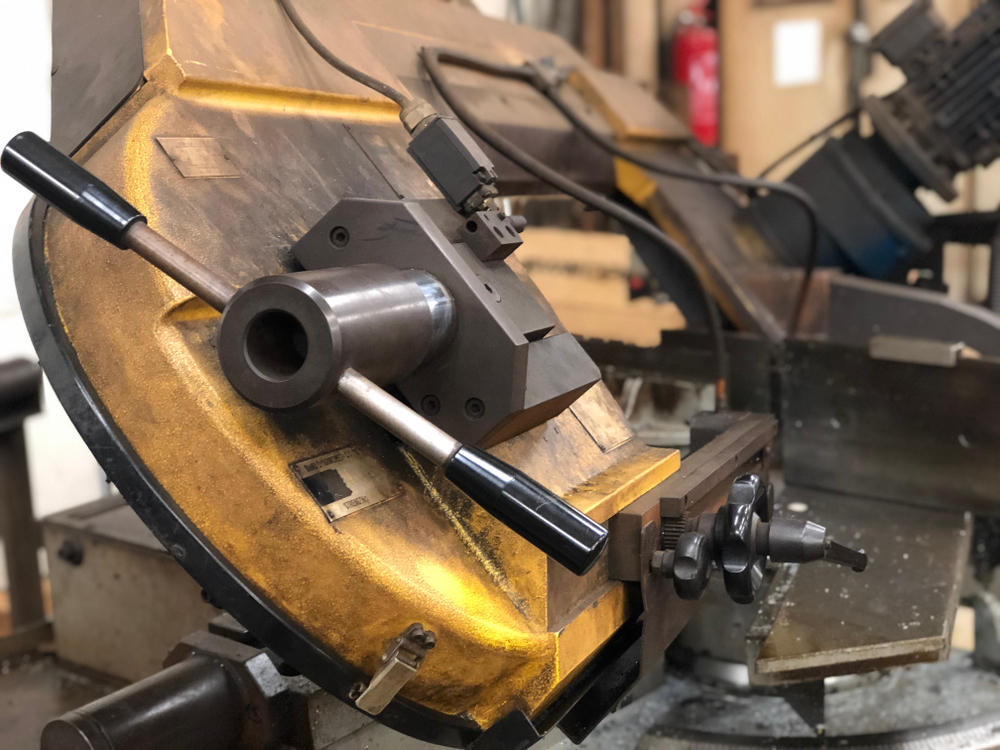The bandsaw is a highly versatile power tool that can be used for both industrial-grade projects as well as personal hobbies. The primary use of a bandsaw is for cutting irregular shapes in surfaces such as wood and metal – provided the appropriate blade is being used.
But have no illusions, there are many things that can go horribly wrong if you don’t know how to properly use this power tool. Here are some common mistakes that people make whilst using a bandsaw as well as some tips on how to prevent them.

Watch your speed
It’s not easy to resist the urge to crank it up to 11, but if you don’t then you could run into some serious issues. You could dull or destroy your blade, snap welds or even creak teeth. It’s important to know the parameters that are required when cutting a certain piece of material.
Whilst you should always consult the charts and manual that come with your bandsaw, a good, general rule of thumb to follow is if it’s a thicker material than use a slower speed and a faster speed for a softer material.
Check your fluids
Bandsaws require specific fluids to be applied to the blade. These are known as cutting fluids. They’re applied to cool the blade, lubricate the teeth and wash away any chips. Some of these fluids must be mixed with water before application to the bandsaw blades and so it’s crucial that you constantly check on the solutions to see if there are any leaks. The water within the mixture will also evaporate as the machine is used so be sure to replace it when needed.
Break in your blade
This is an important step as you can’t use a new blade to its full potential if it hasn’t been broken in. To do this, set the speed of your blade to the manufacturers recommended speed and reduce the feed pressure to around 50% of the normal rate.
Cut 50 – 100 square inches of softer, easier to cut material and around 25 – 75 square inches of harder to cut material. If you don’t break in your blade correctly then you will run into a variety of problems such as dulling the blade quicker than usual and stripping its teeth.
Don’t break your blade
There are a number of factors that can contribute to your blade breaking. Some of these include:
- Incorrect blade tension
- Using the wrong blade for your tool
- Excessive feed
- Smaller sized wheel diameter than what is required
- Blade rubbing on the wheel flanges
These are all big things you’ll want to keep an eye on when cutting. So, make sure you go through a checklist for all these things before you start cutting. A great way to check if your blade tension is right – without using the gauges – is to tighten it and then pluck it. Ideally, it should give off a clean tone as opposed to a muddled thud sound.
Maintain your blades
It is important to maintain your bandsaw and more importantly, its blades. Making sure you’re using the correct blade and where its strengths lie is a good start. You don’t want to push the blade in an area that it’s not made for. Schedule regular maintenance regardless if you think it needs it or not. Not maintaining your blades can lead to degradation and poor performance quality.
Know what you’re cutting
As mentioned above, different blades are used for different types of materials. Make sure you know exactly what you’re cutting before following through with it. Ensure you have the correct blade and that all other parameters are in check as it can severely damage your blade if done incorrectly. Hard spots within certain materials can also damage your blade and strip your teeth.
Don’t strip your teeth
As well as hard spots in materials, this can also be caused by not breaking in your blade – as mentioned earlier – or running your bandsaw at a high feed pressure. The teeth are what do the actual cutting, so you’ll want to make sure you keep them in the best condition possible. Make sure to follow the other steps and stay within the required parameters for cutting the materials and you’ll be fine.
Looking for a bandsaw?
ACRA Machinery offers a fantastic selection of new and used bandsaw products. Our experienced staff also offer a range of services and professional advice on all industrial machinery to suit all your needs.
If you’re after some more bandsaw advice or products, then please do not hesitate to give us a call on 03 9794 6675 or message us through our website.
